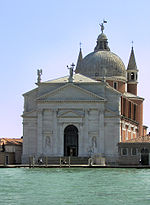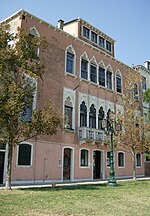Sacca Sessola

Sacca Sessola loosely translated as "Bailing-Scoop Cove" (also called "Isola delle Rose" or "Island of Roses" by the hotel which is located in on the island, it is not a name recognized by the Venetians, or on topographical maps) is an island in the Venetian Lagoon, northern Italy. One of the biggest in the lagoon (16.03 ha) and also one of the youngest. It was artificially created in 1870 in Codas of Reziol, a branch of the Channel Rezzo, with materials from the construction of the Santa Marta commercial port, and has been used a fuel dump, hospital, farming land, UNESCO research complex. The entire island now houses the JW Marriott Venice Resort and SpaA "sacca" or "bag" is an artificial island (see also Sacca Fisola and Sacca San Biagio).
Excerpt from the Wikipedia article Sacca Sessola (License: CC BY-SA 3.0, Authors, Images).Sacca Sessola
Fondamenta de le Scuole, Mestre Venezia-Murano-Burano
Geographical coordinates (GPS) Address Nearby Places Show on map
Geographical coordinates (GPS)
| Latitude | Longitude |
|---|---|
| N 45.406111 ° | E 12.322222 ° |
Address
JW Marriott Venice Resort & Spa
Fondamenta de le Scuole
30170 Mestre, Venezia-Murano-Burano
Veneto, Italy
Open on Google Maps








